Abstract
Rustigian, Robert (Tufts University School of Medicine, Boston, Mass.). Persistent infection of cells in culture by measles virus. II. Effect of measles antibody on persistently infected HeLa clonal line persistently infected with incomplete virus. J. Bacteriol. 92:1805–1811. 1966.—The effect of viral antibody on persistent infection of HeLa cells by the Edmonston strain of measles virus was investigated by culturing cells from three persistently infected clones in medium supplemented with human immune globulin. The three infected HeLa clones were isolated from a persistently infected parent line. Two sublines which were grown in the presence of measles antibody developed a nonyielder state, wherein there is no detectable virus infectious for normal HeLa cultures. There is, however, continued synthesis of intracellular viral antigen and formation of viral intracytoplasmic inclusion bodies. The development of a nonyielder state was associated with a marked decrease in the degree of hemadsorption in cultures of both sublines. Further studies of the viral properties of non-yielder HeLa cell populations were made with a clone obtained from one of these sublines by plating under antibody. Persistent infection in this line was characterized by synthesis of incomplete virus even when the cells were cultured thereafter in anti-body-free medium. This was evidenced by (i) failure to recover infectious virus from the clonal population despite continued formation of intracellular viral antigen and viral intracytoplasmic inclusion bodies in a majority of the cells, (ii) the presence of only a few cells with surface viral antigen(s) including hemagglutinin, and (iii) the relatively weak antibody response to viral envelope antigen(s) after injection of cells into guinea pigs.
Full text
PDF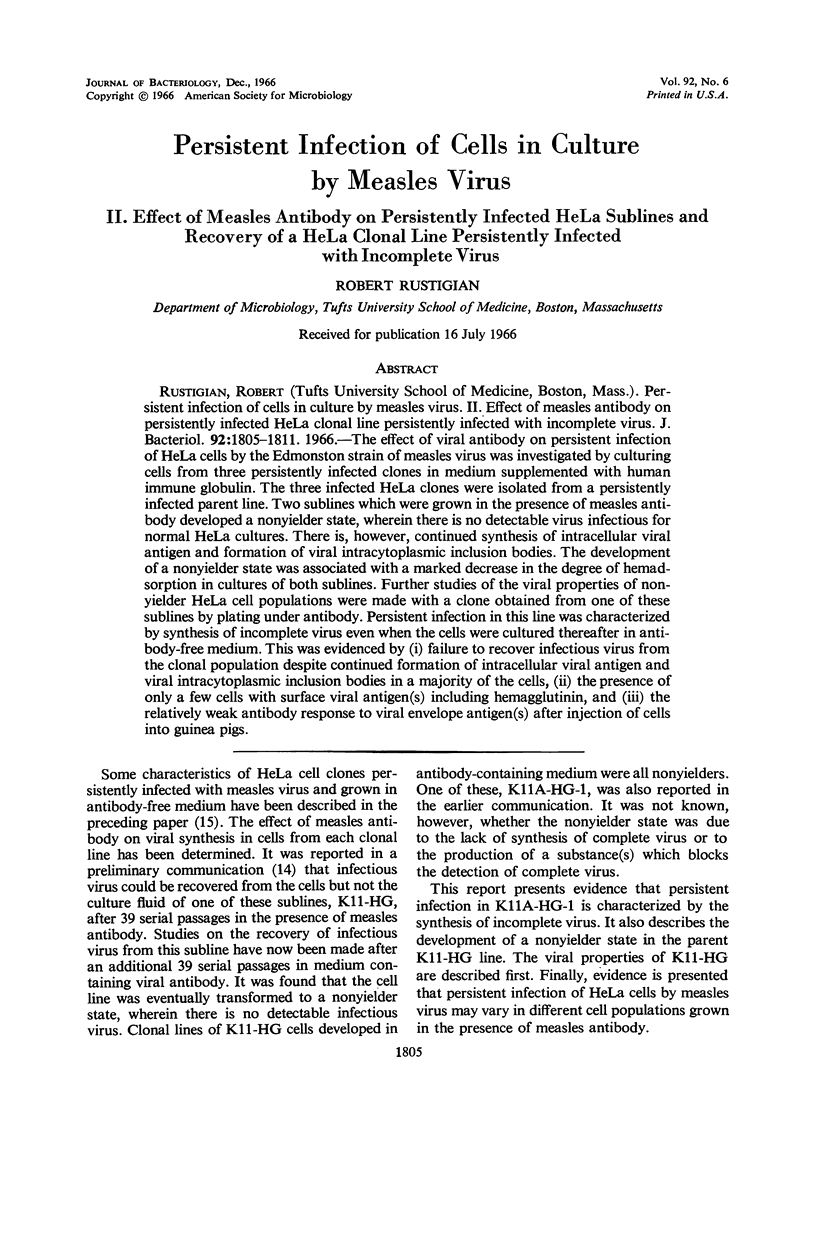
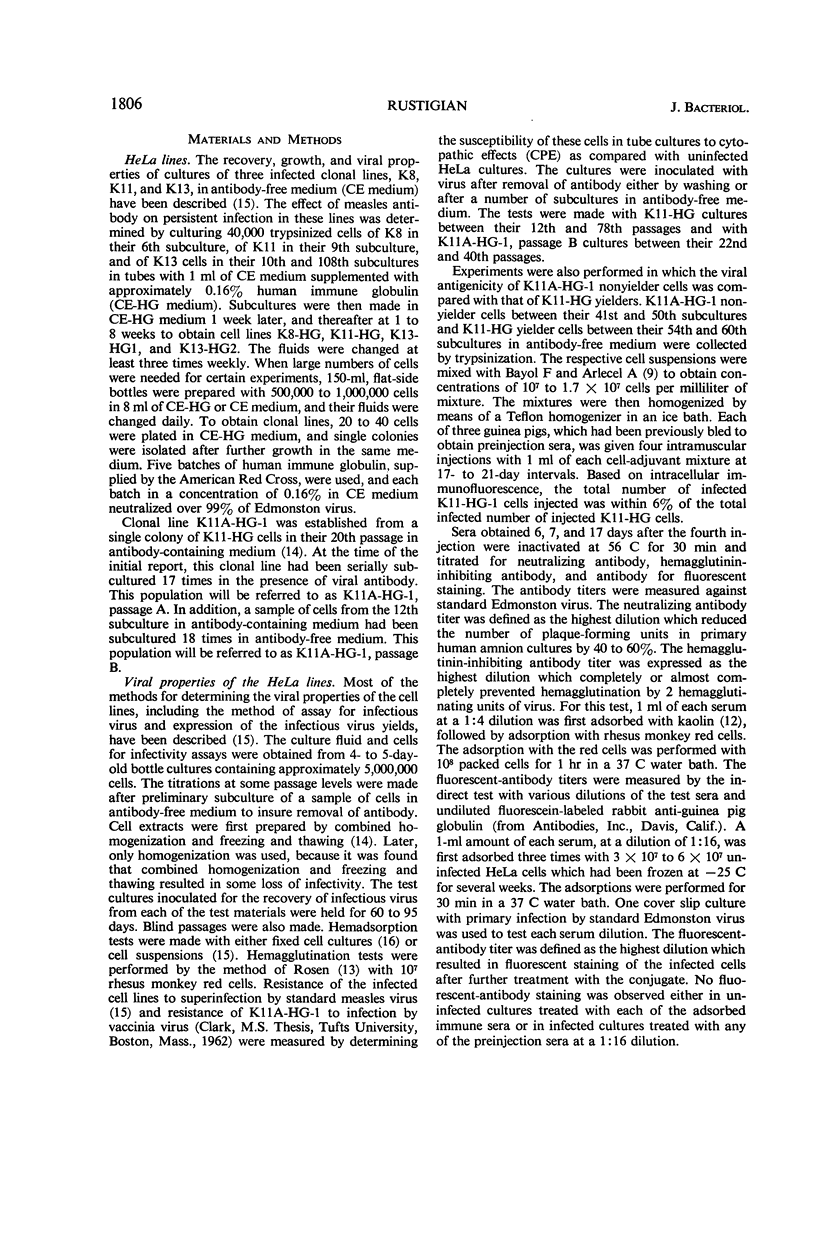
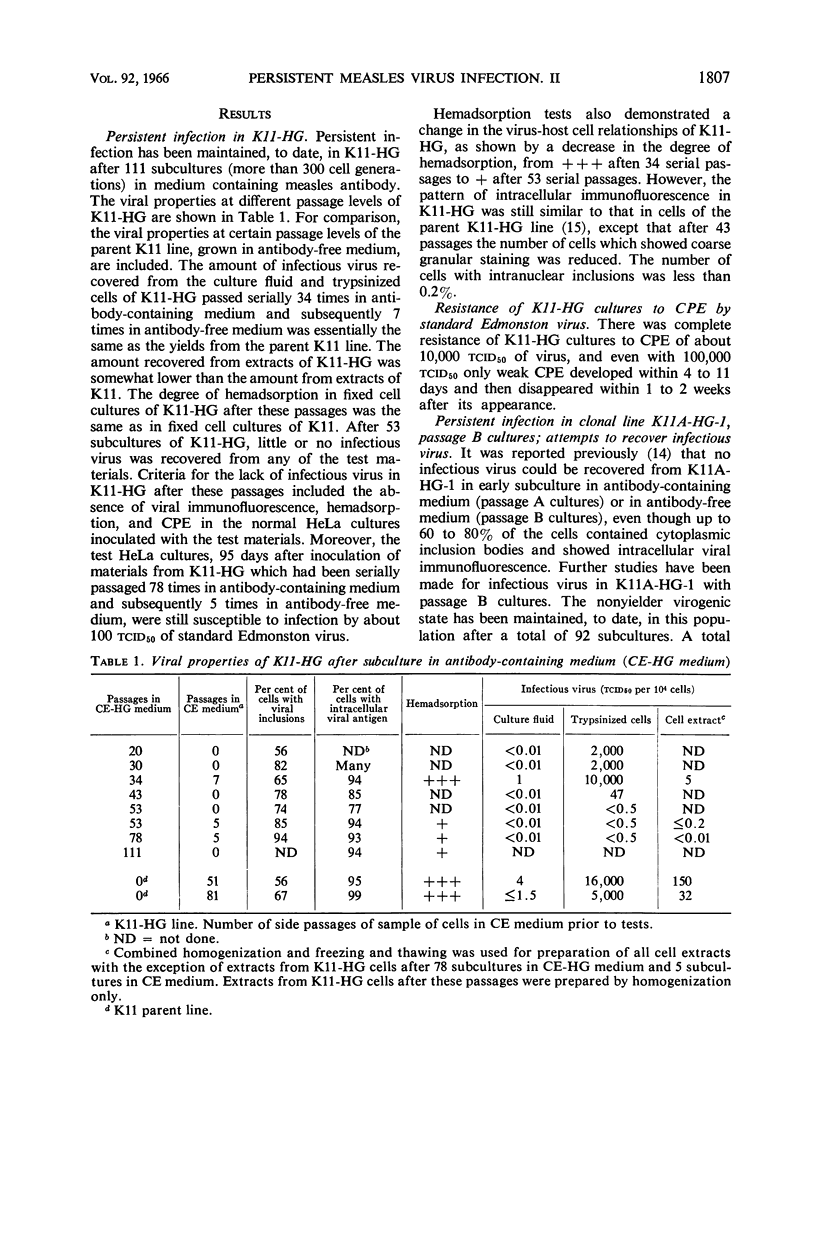
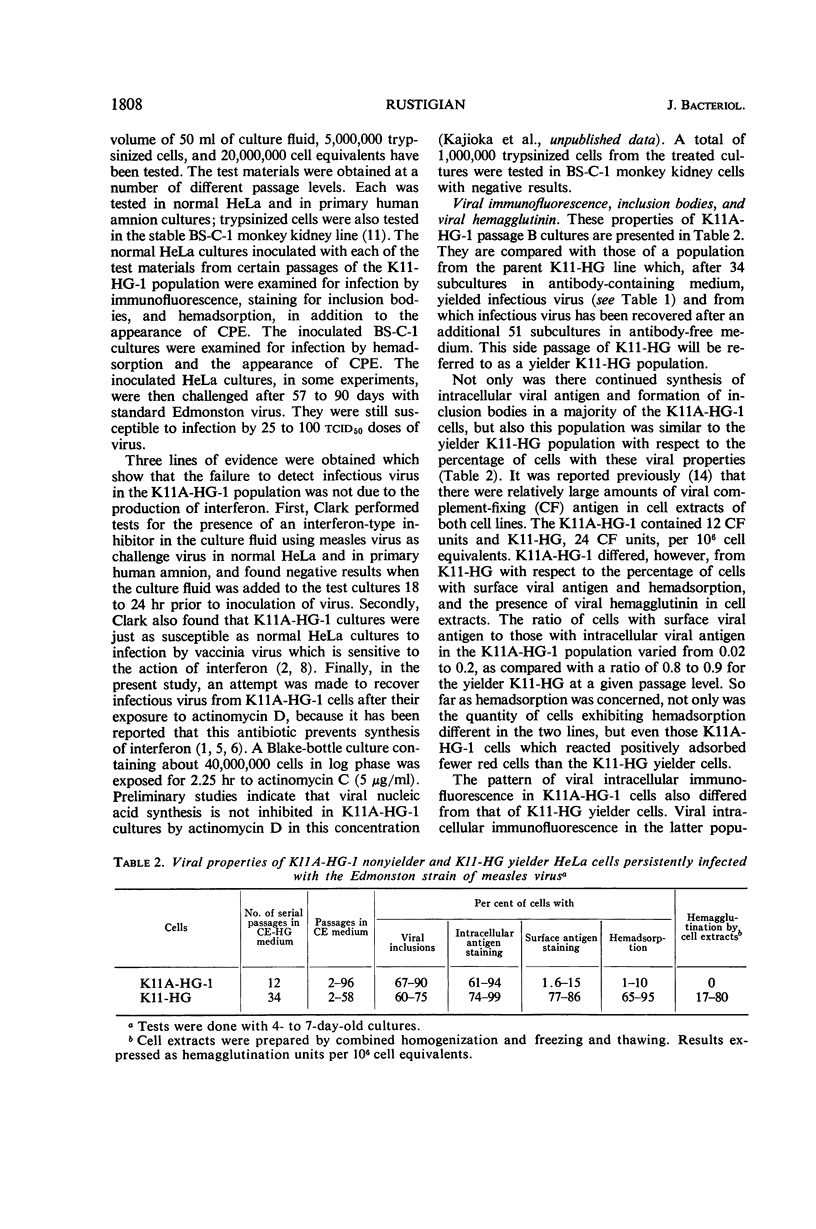
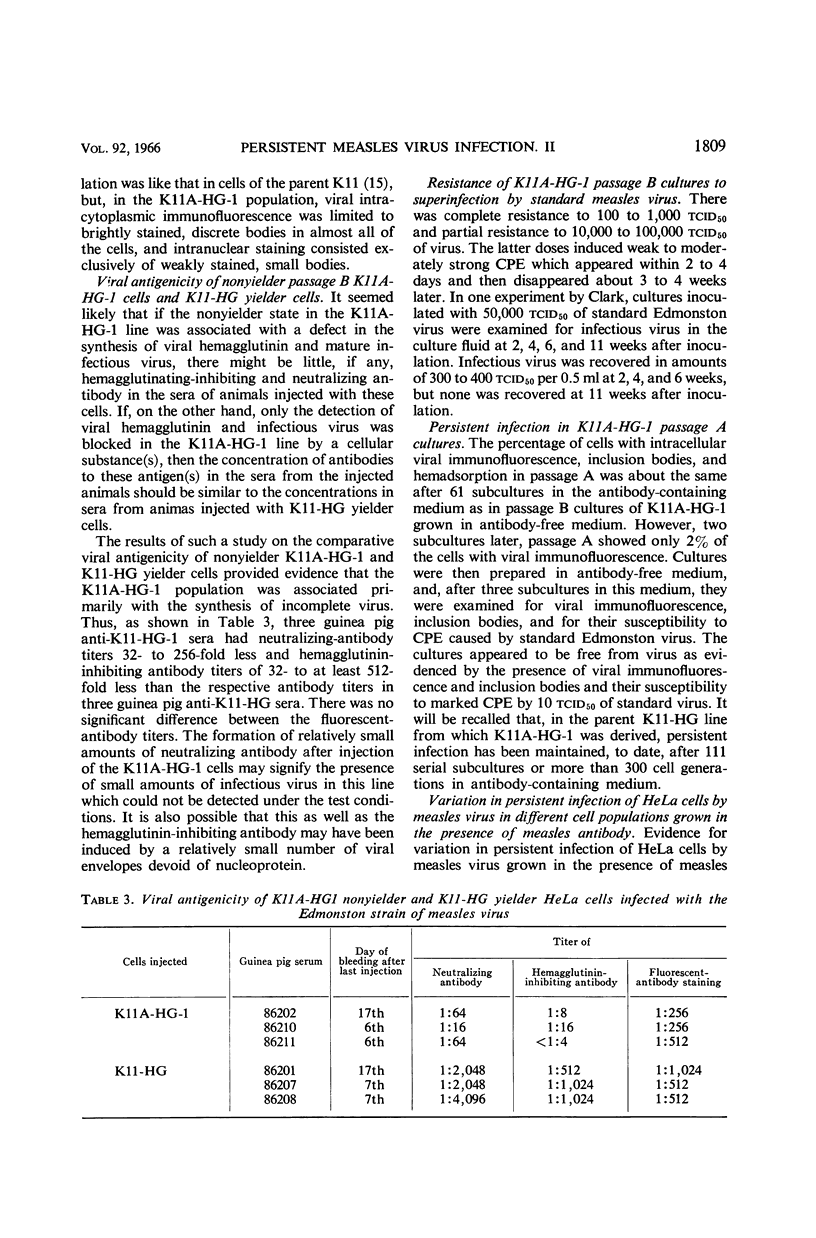
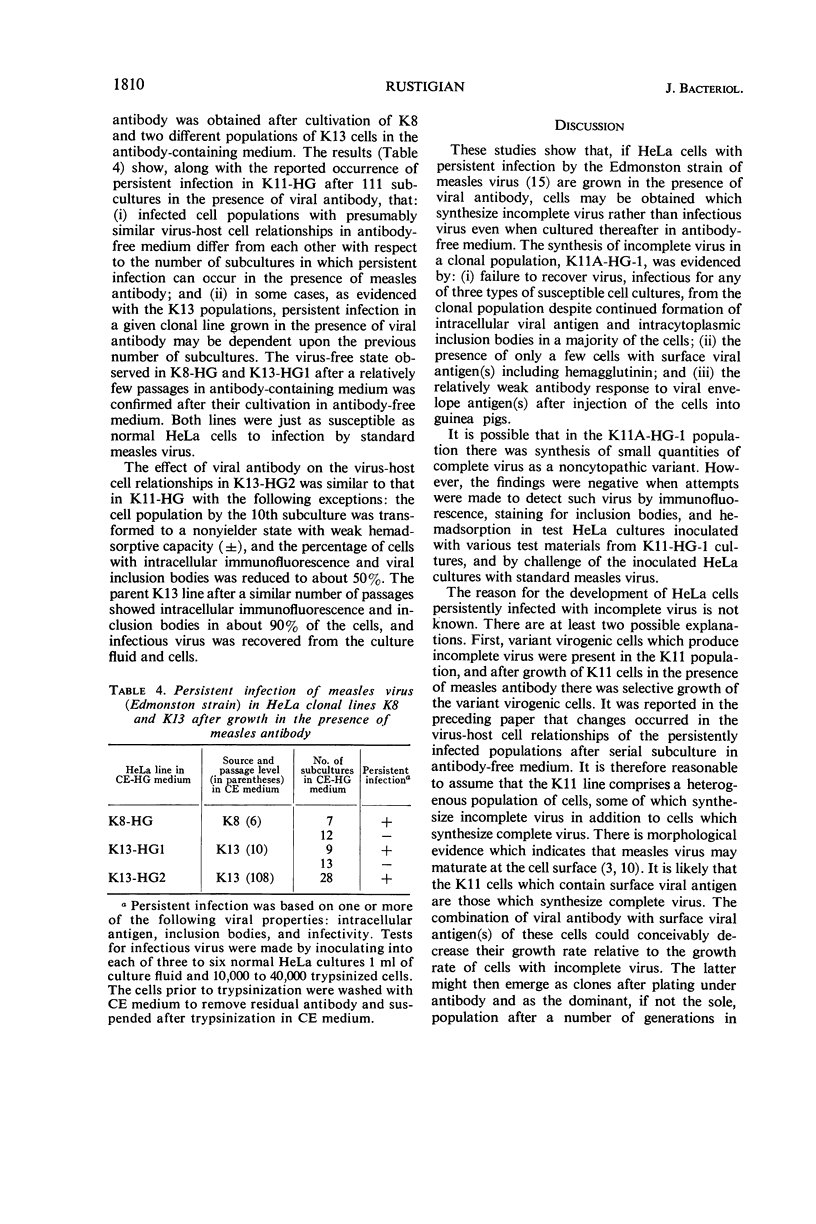
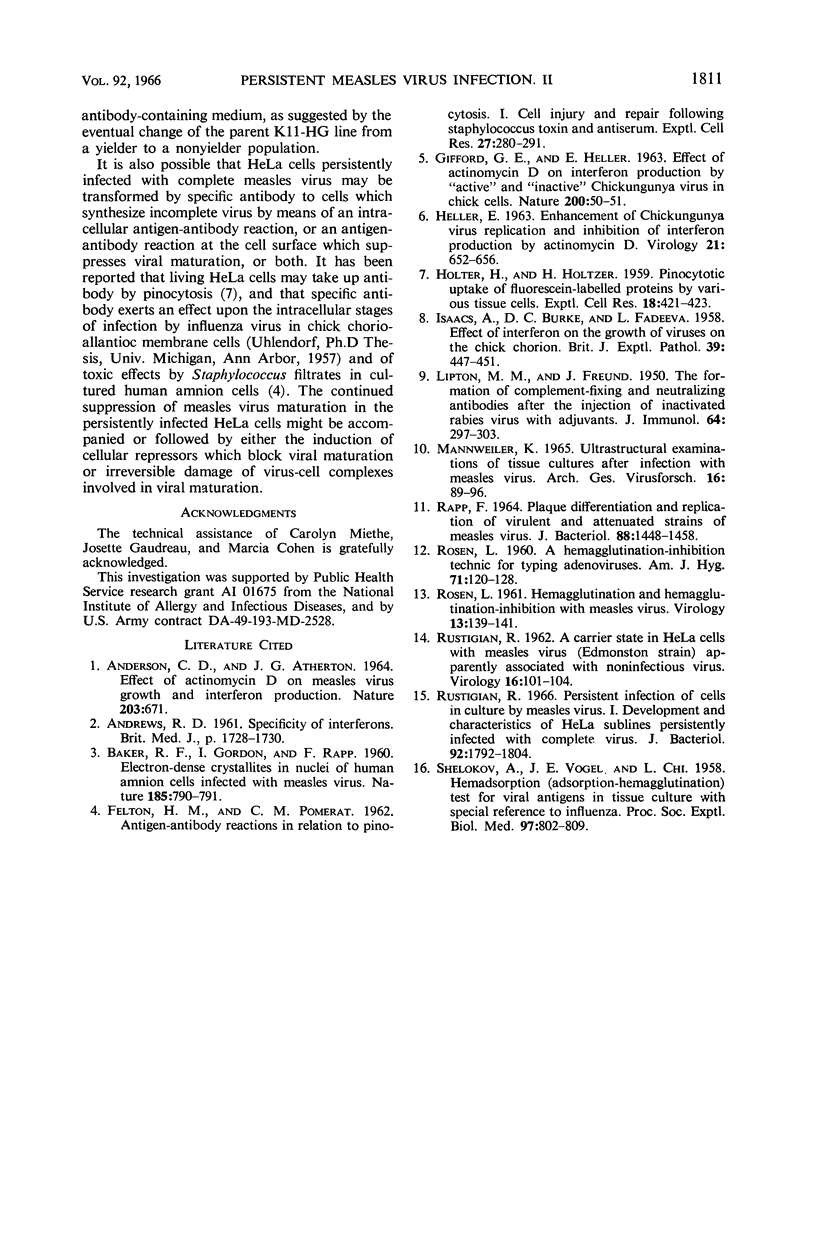
Selected References
These references are in PubMed. This may not be the complete list of references from this article.
- ANDERSON C. D., ATHERTON J. G. EFFECT OF ACTINOMYCIN D ON MEASLES VIRUS GROWTH AND ON INTERFERON PRODUCTION. Nature. 1964 Aug 8;203:671–671. doi: 10.1038/203671a0. [DOI] [PubMed] [Google Scholar]
- Andrews R. D. Specificity of Interferon. Br Med J. 1961 Jun 17;1(5241):1728–1730. doi: 10.1136/bmj.1.5241.1728. [DOI] [PMC free article] [PubMed] [Google Scholar]
- BAKER R. F., GORDON I., RAPP F. Electron-dense crystallites in nuclei of human amnion cells infected with measles virus. Nature. 1960 Mar 12;185:790–791. doi: 10.1038/185790a0. [DOI] [PubMed] [Google Scholar]
- FELTON H. M., POMERAT C. M. Antigen-antibody reactions in relation to pinocytosis. I. Cell injury and repair following Staphylococcus toxin and antiserum. Exp Cell Res. 1962 Aug;27:280–291. doi: 10.1016/0014-4827(62)90230-6. [DOI] [PubMed] [Google Scholar]
- GIFFORD G. E., HELLER E. EFFECT OF ACTINOMYCIN D ON INTERFERON PRODUCTION BY 'ACTIVE' AND 'INACTIVE' CHIKUNGUNYA VIRUS IN CHICK CELLS. Nature. 1963 Oct 5;200:50–51. doi: 10.1038/200050a0. [DOI] [PubMed] [Google Scholar]
- HELLER E. ENHANCEMENT OF CHIKUNGUNYA VIRUS REPLICATION AND INHIBITION OF INTERFERON PRODUCTION BY ACTINOMYCIN D. Virology. 1963 Dec;21:652–656. doi: 10.1016/0042-6822(63)90239-3. [DOI] [PubMed] [Google Scholar]
- HOLTER H., HOLTZER H. Pinocytotic uptake of fluorescein-labelled proteins by various tissue cells. Exp Cell Res. 1959 Oct;18:421–423. doi: 10.1016/0014-4827(59)90033-3. [DOI] [PubMed] [Google Scholar]
- ISAACS A., BURKE D. C., FADEEVA L. Effect of interferon on the growth of viruses on the chick chorion. Br J Exp Pathol. 1958 Oct;39(5):447–451. [PMC free article] [PubMed] [Google Scholar]
- LIPTON M. M., FREUND J. The formation of complement fixing and neutralizing antibodies after the injection of inactivated rabies virus with adjuvants. J Immunol. 1950 Apr;64(4):297–303. [PubMed] [Google Scholar]
- MANNWEILER K. ULTRASTRUCTURAL EXAMINATIONS OF TISSUE CULTURES AFTER INFECTION WITH MEASLES VIRUS. Arch Gesamte Virusforsch. 1965;16:89–96. doi: 10.1007/BF01253796. [DOI] [PubMed] [Google Scholar]
- RAPP F. PLAQUE DIFFERENTIATION AND REPLICATION OF VIRULENT AND ATTENUATED STRAINS OF MEASLES VIRUS. J Bacteriol. 1964 Nov;88:1448–1458. doi: 10.1128/jb.88.5.1448-1458.1964. [DOI] [PMC free article] [PubMed] [Google Scholar]
- ROSEN L. A hemagglutination-inhibition technique for typing adenoviruses. Am J Hyg. 1960 Jan;71:120–128. doi: 10.1093/oxfordjournals.aje.a120085. [DOI] [PubMed] [Google Scholar]
- ROSEN L. Hemagglutination and hemagglutination-inhibition with measles virus. Virology. 1961 Jan;13:139–141. doi: 10.1016/0042-6822(61)90042-3. [DOI] [PubMed] [Google Scholar]
- RUSTIGIAN R. A carrier state in HeLa cells with measles virus (Edmonston strain) apparently associated with non-infectious virus. Virology. 1962 Jan;16:101–104. doi: 10.1016/0042-6822(62)90212-x. [DOI] [PubMed] [Google Scholar]
- Rustigian R. Persistent infection of cells in culture by measles virus. I. Development and characteristics of HeLa sublines persistently infected with complete virus. J Bacteriol. 1966 Dec;92(6):1792–1804. doi: 10.1128/jb.92.6.1792-1804.1966. [DOI] [PMC free article] [PubMed] [Google Scholar]
- SHELOKOV A., VOGEL J. E., CHI L. Hemadsorption (adsorption-hemagglutination) test for viral agents in tissue culture with special reference to influenza. Proc Soc Exp Biol Med. 1958 Apr;97(4):802–809. doi: 10.3181/00379727-97-23884. [DOI] [PubMed] [Google Scholar]


